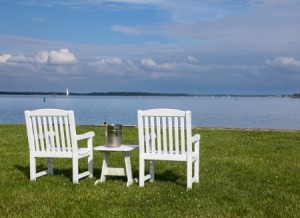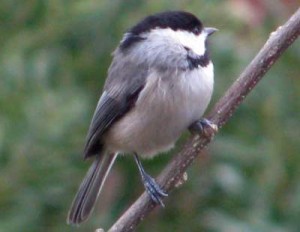Perhaps trees are the most majestic of all living organisms. Trees are the tallest, the most massive, and the oldest of all living things on earth. They provide us with oxygen and shade, food and shelter, beauty and serenity. The broad array of benefits that trees bestow on our lives have thus far eluded our ability to accurately quantify them. But it is strikingly obvious to any fledgling student of ecology, that a world without trees would be an impoverished world indeed. Trees provide enormous economic, social, and environmental benefits. Historically, our dependency on trees is clear, the rise and fall of entire civilizations has hinged heavily on our exploitation of trees for food, fuel and construction materials. Today — to an urban observer — the role of trees may seem less prominent, but as deforestation continues around the globe, the individual trees in our own back yards have never been more important.
Trees Reduce Our Energy Consumption
The average annual temperature of the Earth is increasing. Although it has been higher in the distant past, never have so many humans populated the margins of the land and been susceptible to a substantial rise in sea-level. Taking steps to slow this trend would be prudent, regardless of the primary cause of warming temperatures. Small quantities of carbon dioxide in our atmosphere can change the ability of our planet to retain radiant energy from the sun. During photosynthesis, trees absorb carbon dioxide and liberate oxygen back into the atmosphere. By storing carbon in their trunks and roots, and decreasing the amount of carbon dioxide in the air, trees help to reduce warming. We heat and cool our buildings predominantly by burning fossil fuels. This increases the carbon dioxide content of the air, leading to additional warming. By absorbing and reflecting sunlight, trees reduce the amount of energy we need to cool our buildings. Strategically placed evergreens planted as windbreaks decrease the amount of energy we need to keep warm in the winter. By reducing energy demands, we reduce atmospheric carbon dioxide and other pollutant emissions. Less energy consumption curbs our need to construct more power plants. Trees also provide an additional cooling effect through transpiration. Water absorbed by the roots moves from the trunk to the foliage and evaporates from tiny pores in the leaves called stomata. “Perspiring” trees cool the air.
Local Trees Improve the Health of the Chesapeake Bay

This view of the Bay needs more native trees
and less alien turf grass.
The Chesapeake Bay, one of most productive estuaries in the world, is a complex ecosystem supporting over 3,600 species. Our local trees play a vital role in the health of the Bay by reducing stormwater runoff and soil erosion. The productivity of the Chesapeake Bay is linked directly to its shallow waters. If the Bay were the size of a football field, its average depth would be the thickness of a dime. After a rainstorm, nutrient rich runoff loaded with sediment clouds the water, blocks the sunlight and disrupts the growth cycle of shallow water grasses. This aquatic vegetation is foundational to the health of the Bay. Each and every tree in our neighborhood mitigates these problems by intercepting rainwater and removing pollutants from the atmosphere and soil. Tree roots act in concert with soil microorganisms to increase soil permeability, allowing rainwater to be absorbed, groundwater to be recharged, chemical pollutants to be sequestered and soil erosion to be reduced. Each tree we remove increases the burden on our water drainage and waste treatment infrastructure and ultimately weakens the health of the ecosystem that sustains us. Trees trap and filter airborne pollutants created by exhaust and industrial activity. Local trees literally cleanse the air in our neighborhoods.
Local Trees Sustain Local Biodiversity

A local Carolina chickadee is earning a living
in our neighborhood trees.
Native trees in our suburban gardens increase biodiversity. For native bird populations to thrive, high protein insects must be available to feed the nestlings. Adult birds may visit our back yard seed feeders, but without caterpillars and other insects to feed their nestlings, native bird populations will continue to decline. The foliage of native trees is a valuable food source for local insects. By protecting and caring for our mature native trees, beneficial insect populations increase, providing biomass critical to sustain healthy populations of wrens and woodpeckers, warblers and waxwings. Our feathered friends are under increasing pressure from habitat loss. We can ease that pressure by maintaining our mature native trees. It is within the power of individual property owners to make a difference by recognizing the importance of trees. We can choose to plant the right trees in the right locations and we can choose to protect and preserve the mature trees under our stewardship.
